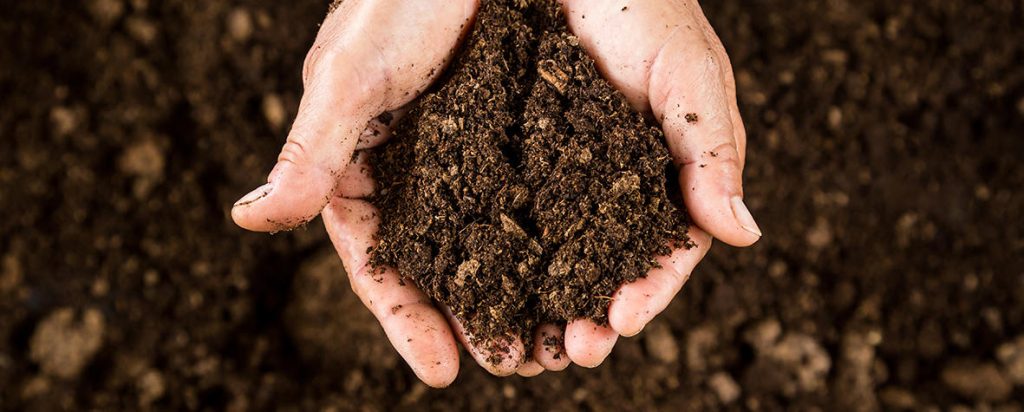
N. MUNAL MEITEI
While many people recognize that clean water and air are signs of a healthy ecosystem, most of us do not realize that a critical part of the environment is right beneath our feet. The ground plays an important role in maintaining a clean environment by serving as a natural filtration and purification system.
We look at nature and see all the beauty and the prosperity around us. Earth’s outer layer – from the top vegetation canopy to the strata of soils and layers of underground material – helps soak up and purify water by extracting excess nutrients, heavy metals and other impurities. About 60% of the world’s annual precipitation ends up in this zone and there is more water, under the ground than there is in the so-called ‘blue waters,’ such as ponds, lakes and rivers. Without water, there is no life. Without groundwater, there is no clean water. Thus, beneath the surface lies the foundation of our sustainability.
Soil is a vital source of our food and medicine, home to a vast reservoir of biodiversity and is an important storehouse of carbon. Soil is one of the Earth’s most valuable natural resources, yet 30% of our soils are degraded. Soil is one of the most ubiquitous – and underappreciated substances on Earth.
Despite being everywhere around us – in fields and gardens and beneath our feet – soil is often taken for granted. Yet in several fascinating ways, this miraculous substance holds the key to life on Earth. It helps produce our food, filters and purifies our air, water, reduces flooding, regulates the atmosphere and plays a crucial role in driving the carbon and nitrogen cycles. It is also one of the most biodiverse habitats on Earth.
Soil is Earth’s living skin: thin and delicate but also playing an irreplaceable role in preserving the health of Eco-system and the global biosphere as a whole. Soil is one of the most underrated and little understood wonders on our fragile planet.
Soil plays a vital role in either limiting or exacerbating climate change. Most people are already aware of the importance of forests and trees in reducing CO 2 in the atmosphere. But soil stores an extraordinary quantity of carbon : three times the amount in the atmosphere and twice the amount contained in all plants and trees.
Plants not only extract CO 2 from the atmosphere but store in the soil in the form of plant residues and humus. These organic compounds which locks carbon in a stable and eco-friendly way are basis of our foods. However, when soil becomes damaged or degraded, it again release CO 2 or methane back into the atmosphere, thereby accelerating – rather than decelerating – the climate change.
Switching of farming methods can dramatically change the emissions profile of the land. If managed in the right way, soils will be healthier and more fertile – and also store more carbon. Soil is a vital stock cupboard – not just for carbon, but for the life.
Almost 25% of animal species on Earth live underground, while 40% of organisms in terrestrial ecosystems are associated with soil at some points during their lifecycles. Healthy soils provide habitats that support thousands of different species of fungi, bacteria and invertebrates, which then work in combination to drive the Earth’s carbon, nitrogen and water cycles, thereby creating the nutrients and food we need to survive. Simply to say, soil produces a staggering 95% of humanity’s food supply , by growing both the crops we eat and for the livestock.
Many life-saving drugs and vaccines are discovered in the chemically rich and biologically diverse environments found in soil which include penicillin to bleomycin and many others. Healthy soils enable plants to produce helpful chemicals such as antioxidants which protect them from pests and other external threats. When humans eat these plants, the antioxidants boost our immune systems and hormone regulation. Thus healthy soils relates to our healthy body.
When we come to know the different ways in which soils helps to support life on Earth, most of our soils might have been irreparably damaged and vulnerable. The FAO estimates that 30% of the world’s soils are now degraded. While a recent report by the European Commission estimates that between 60% and 70% of its soils are unhealthy to damaged.
There are multiple human-made threats to soil health. These include deforestation, urbanization, agricultural intensification, soil compaction, acidification, salinization, pollution, landslides, wildfires and soil erosion. According to the FAO , soil erosion poses a major threat to global food security compromising at least 3.2 billion people globally.
What makes the situation even more serious is the fact that high-quality, fertile soils cannot be quickly or easily replenish. It takes 100 years to build just half a centimeter of healthy soil , which means we are currently losing soil 50 to 100 times faster than it is able to rebuild.
Since the Green Revolution, an estimated 135 billion tonnes of soil has been lost, through a combination of practices including deforestation to create more arable land, mono-cropping, overgrazing, tillage, the use of heavy machinery and the misuse of fertilizers and pesticides. Healthy soils can be protected and restored by growing a diverse range of plants. These include regular crop rotation, sustainable grazing and mixed-use farming methods such as agroforestry which involves planting trees alongside crops.
Individuals can also play a role through the products we choose to buy and the food we eat. More than 80% of the world’s farmland is used to raise livestock , this meat provides back only 12% of all the calories consumed.
Soil is connected to almost everything that humans do, including the plants we grow and our habits. Raising awareness on importance and how soil is currently at risk should be in wider environmental debate. Until now, many of us have under estimated the richness and vitality of this unseen subterranean world. Thus, from this moment onwards, let’s save soils because we have everything if we have the healthy soil.
(The writer is an environmentalist, email-nmunall@yahoo.in)





